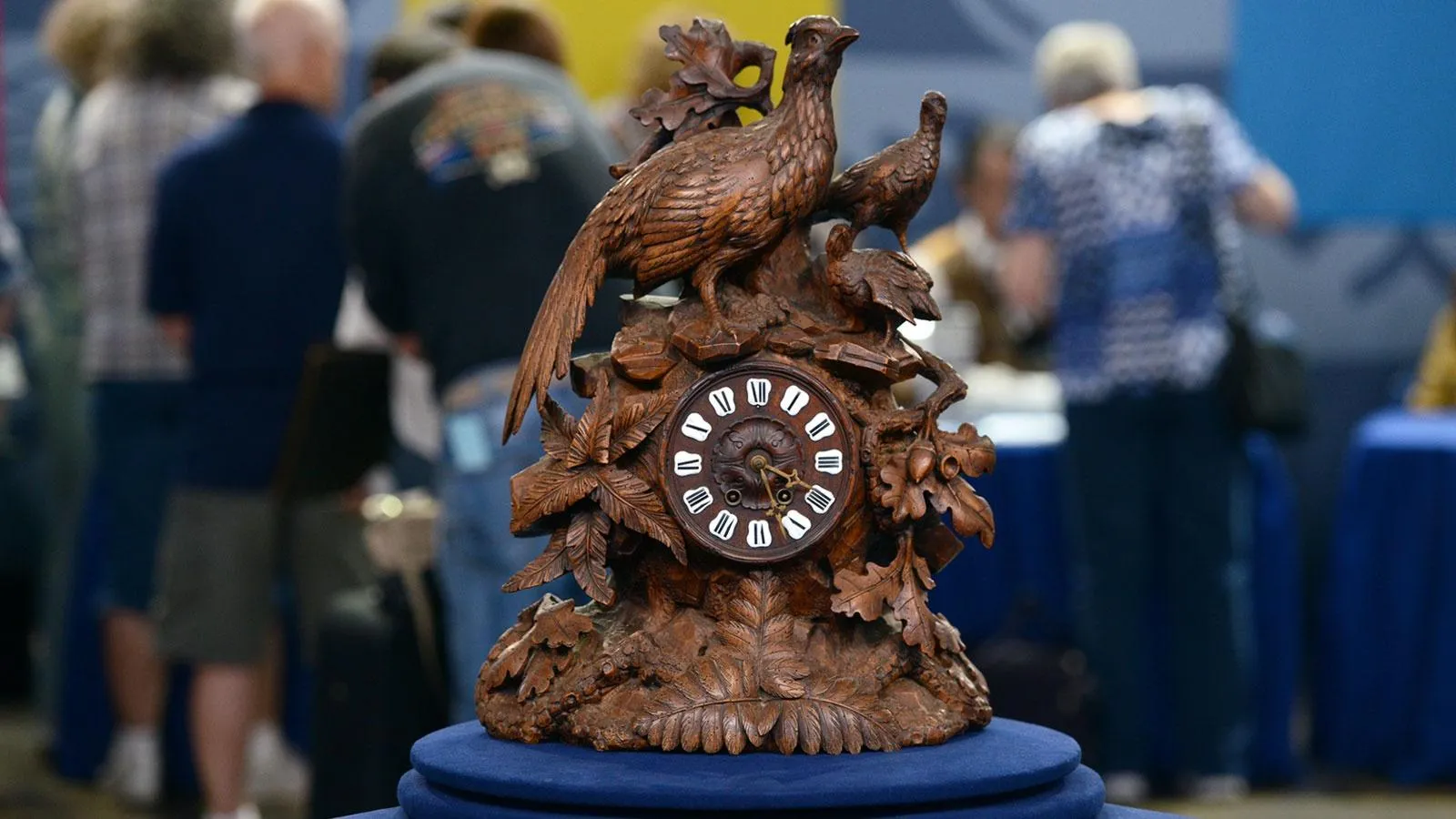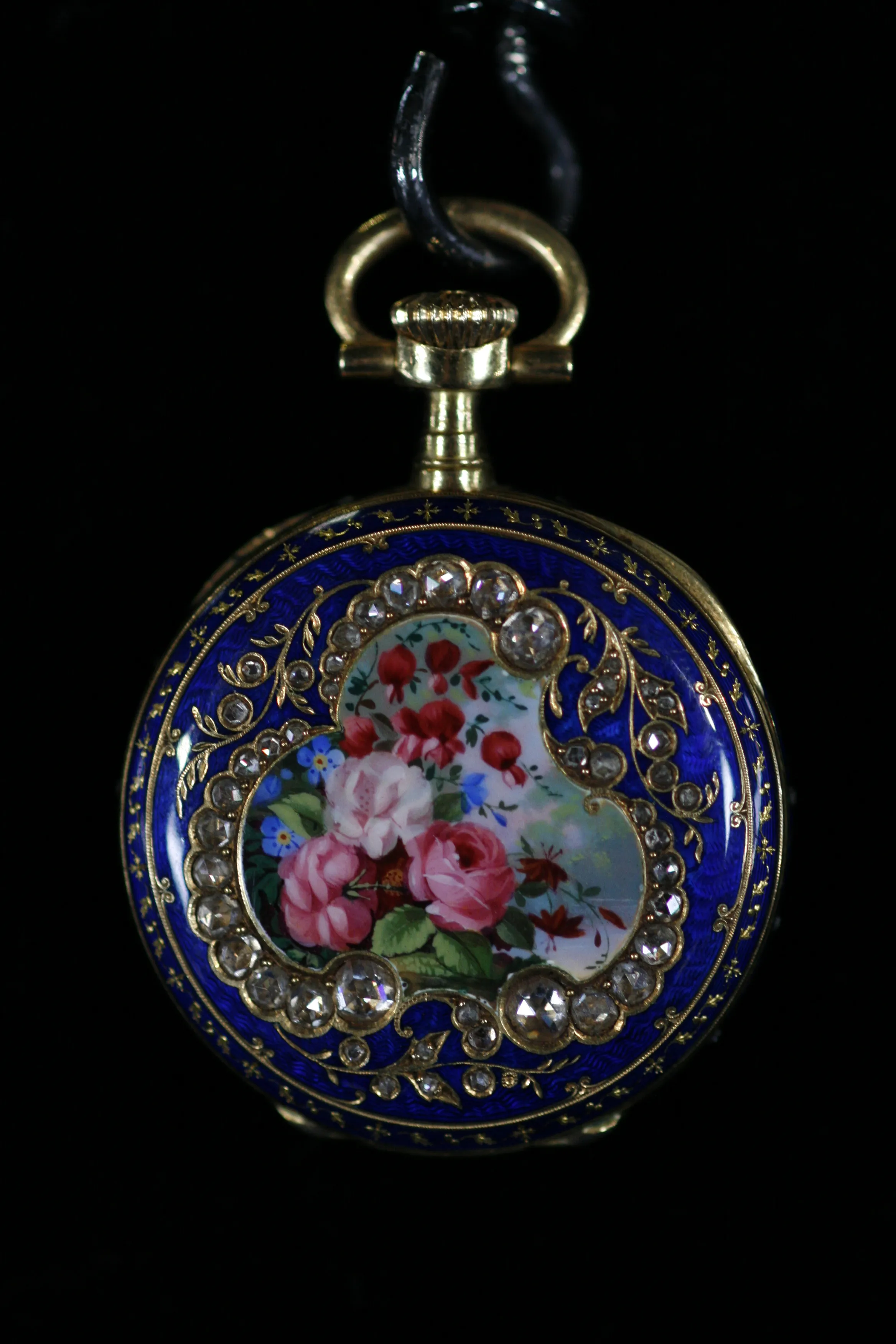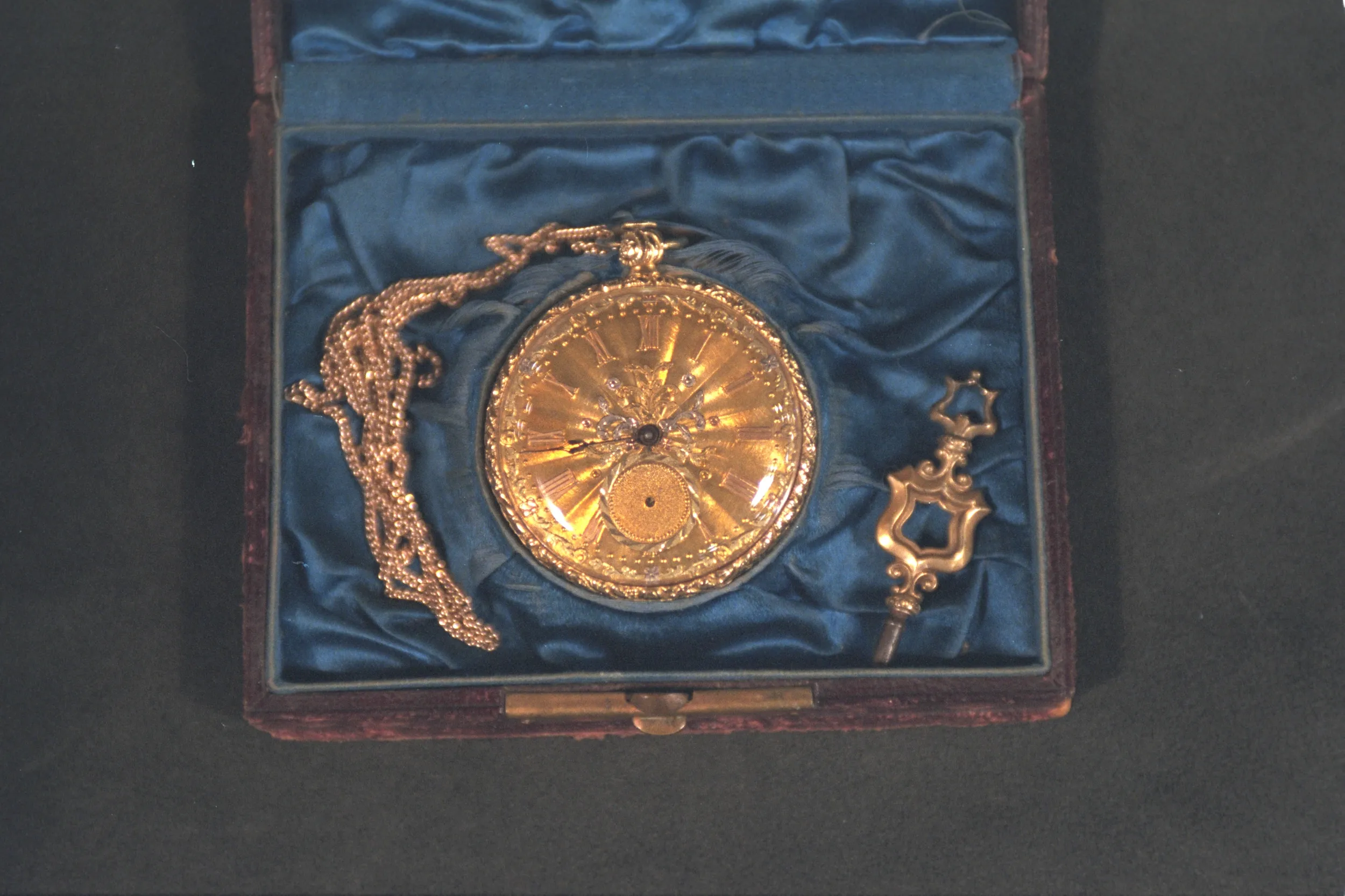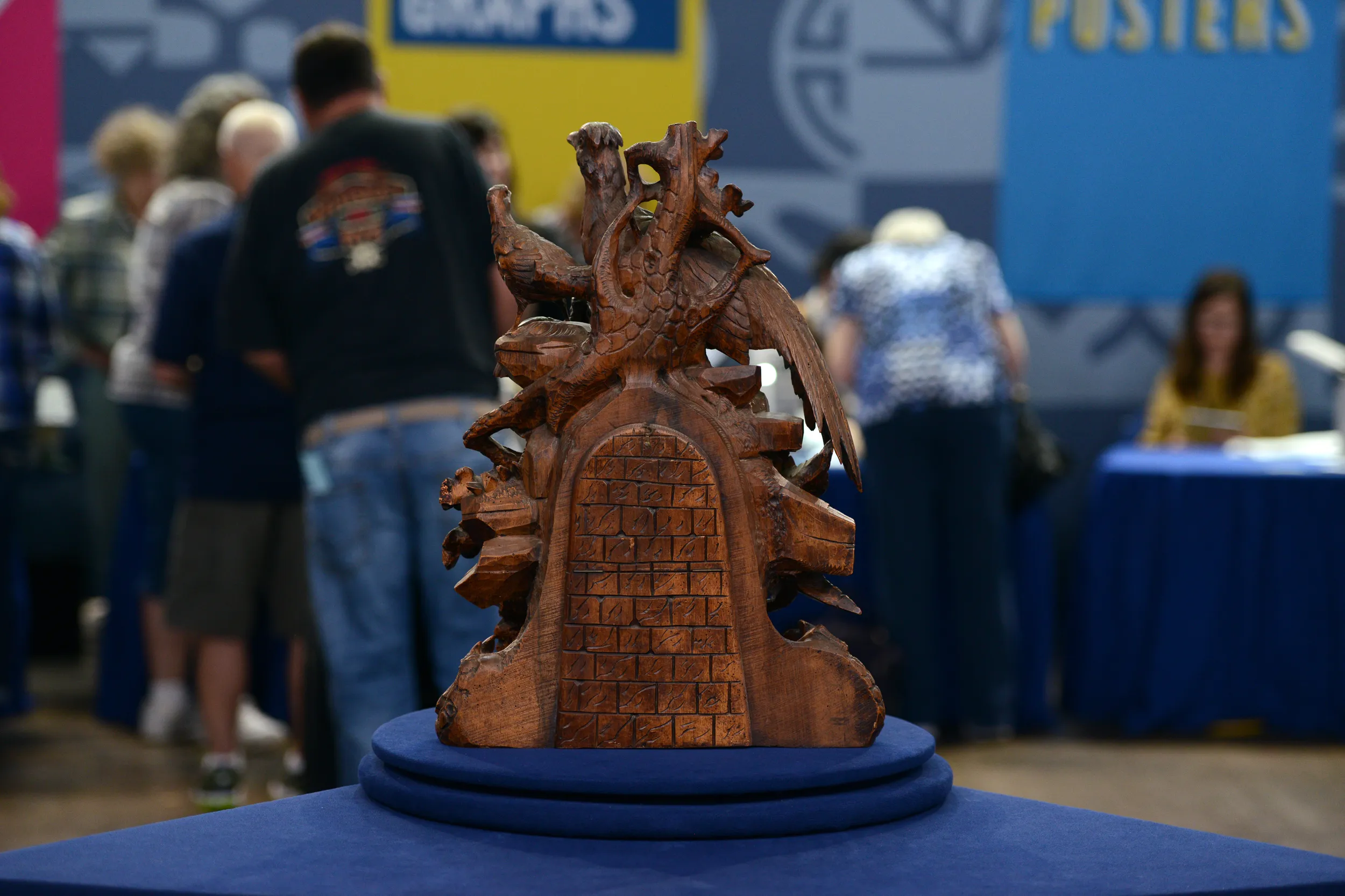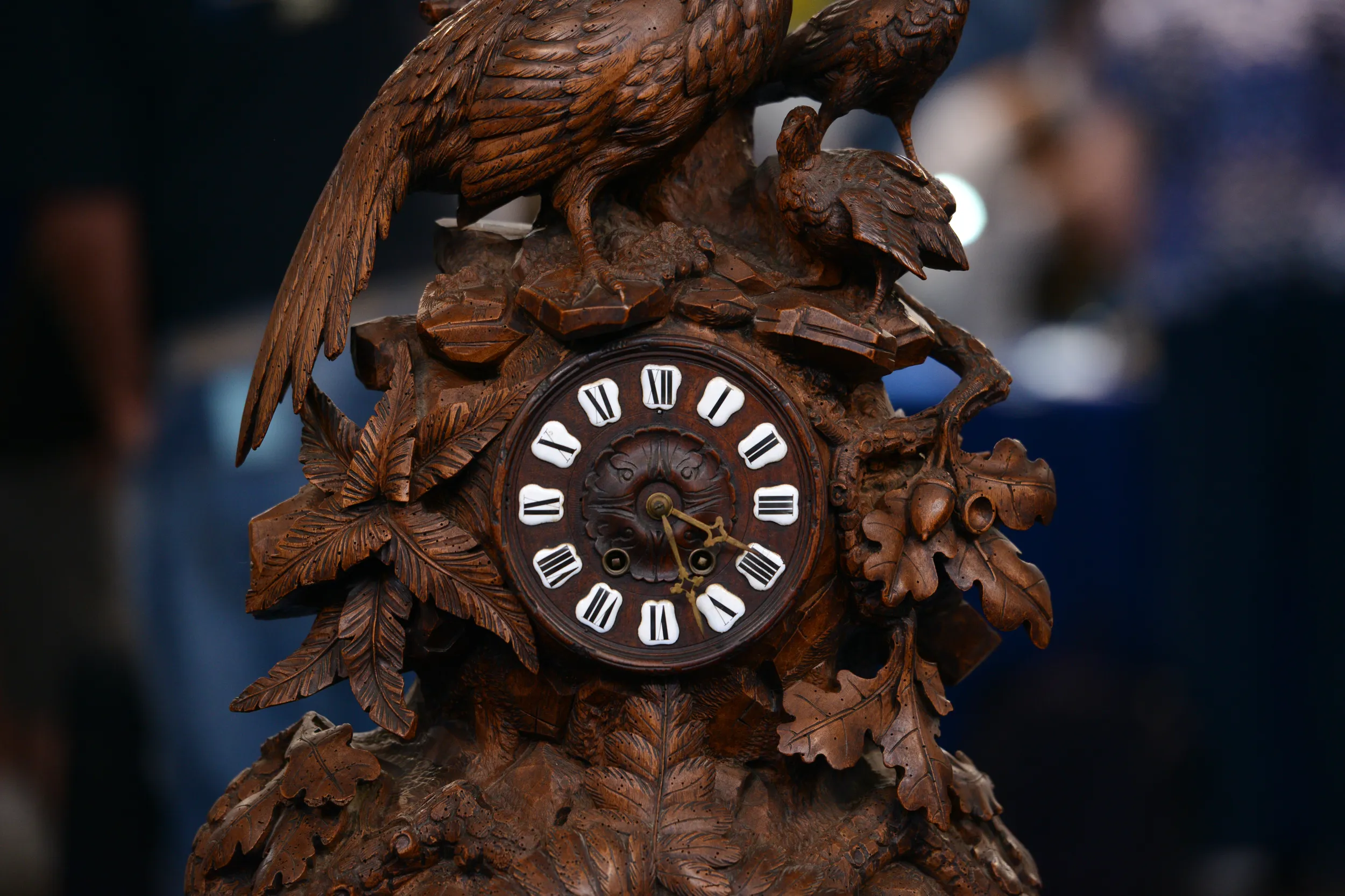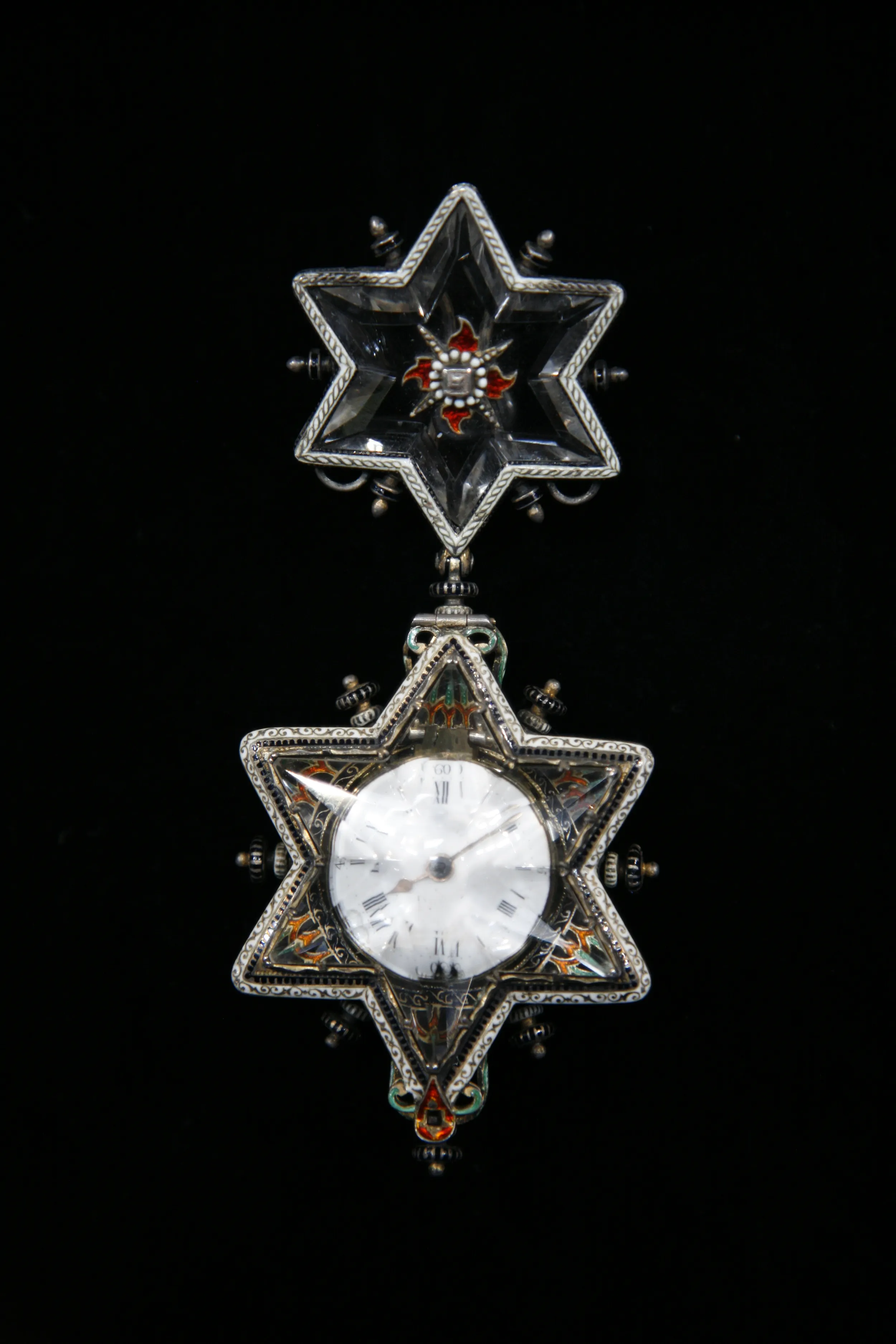GUEST: My parents were stationed in the military, and were in La Rochelle, France, back in the early '60s, and when I was, oh, probably about ten years old, I was out with them antiquing, and we found this in an old barn, and finally was able to talk them into buying it for me, because I always loved the, all the intricate carving and everything on the clock.
APPRAISER: They undoubtedly, uh, trusted your taste.
GUEST: Yes, it was...
APPRAISER: (chuckles) Well, it's an attractive clock. I mean, it's like eye candy, isn't it?
GUEST: You know, I mean, the carving that they've put into this and all the detail and all the leaves, the birds on it, even to the acorns that are on the side, I mean, you don't still see that type of detailed work anymore. I'm just guessing that it probably came from the Black Forest area of Germany, maybe 1900, somewhere in that, uh, timeframe.
APPRAISER: Okay.
GUEST: When we first got it, there were still some of the worm bores and so forth in it.
APPRAISER: I see.
GUEST: And it took a little while to get those killed. Every morning, you'd get up and there'd be a little pile of sawdust.
APPRAISER: Yeah, they have a real problem in Europe with powderpost beetle.
GUEST: Uh-huh.
APPRAISER: And that's what this is, damage from it. I haven't seen any signs of ac, recent activity, but, uh, they are a pest over there.
GUEST: Are they?
APPRAISER: You mentioned that you sort of cleaned it up a little bit. And I think that's what dictated, uh, the difference in color between the face itself and the body of the clock.
GUEST: Mm-hmm.
APPRAISER: It probably is a little darker at one point. May have had a darker wax on it and everything. Still, very attractive-looking clock. And I guess, is this a pheasant on top?
GUEST: I believe that's a pheasant, uh, with a hen and a chick.
APPRAISER: Well, these were sort of in the taste of the Black Forest clocks of the region. But I think this one may be even French.
GUEST: Mm-hmm, okay.
APPRAISER: And there's a couple of reasons. One is the face of the clock-- you'll notice these little porcelain cartouche numbers here. That's typically a French influence right there.
GUEST: Okay.
APPRAISER: And the, the second thing is the shape of the plates of the movement. Don't you like this brickwork on the back of the...
GUEST: Yes.
APPRAISER: You know, if it was in front of a mirror, you'd get that view?
GUEST: Mm-hmm.
APPRAISER: Sort of a neat feature. But I don't know if you noticed that the mechanism is sort of square in shape.
GUEST: Uh-huh.
APPRAISER: And that's also more of a French influence as opposed to the German influence. Has a, what we call a count wheel strike. Nice quality movement. It really is not in the vein of the cuckoo clock.
GUEST: Uh-huh.
APPRAISER: This is far superior to it. And this was a much more expensive item. Well, it's an eight-day clock, strikes on the hour and half-hour on a bell. Your date, I think, maybe is a little late. I think it to be about 1880.
GUEST: Oh, okay.
APPRAISER: This has a tight enough grain. I don't know if it's walnut or possibly alder. Real attractive clock, I tell you. It's impressive to see this quality of carving. Today, I would retail this clock for $3,500.
GUEST: Oh wow, well, very good. Very surprising.
APPRAISER: And how much did they pay for it?
GUEST: I think it was about $20.
APPRAISER: Boy, can you imagine how proud they would be today?
GUEST: Yes, they would.


